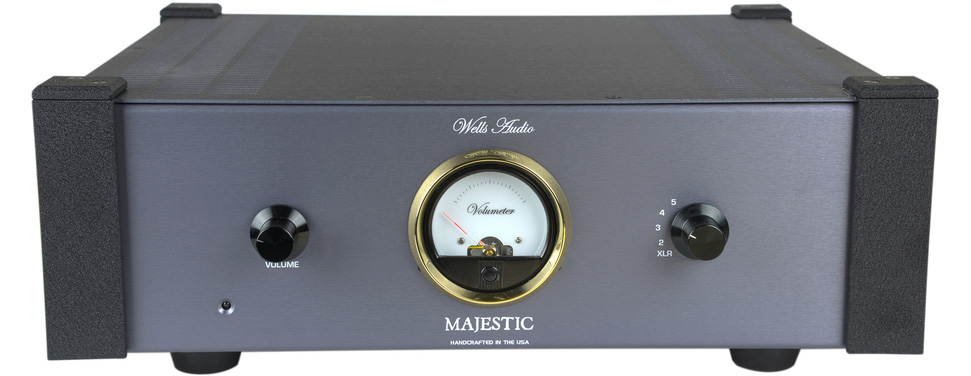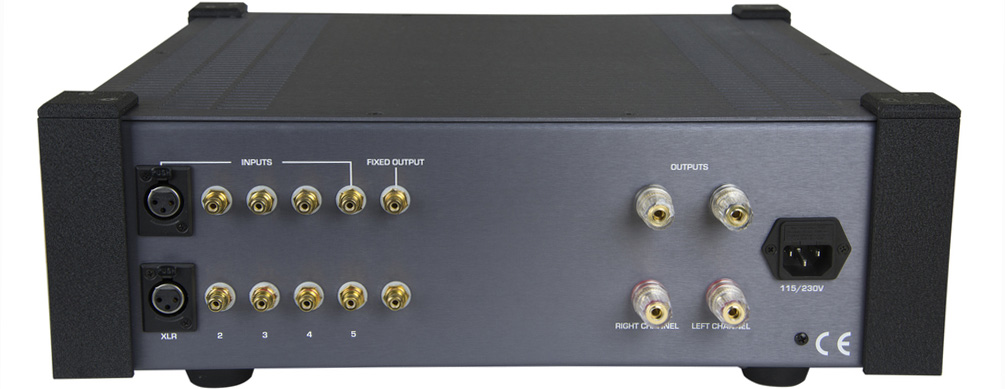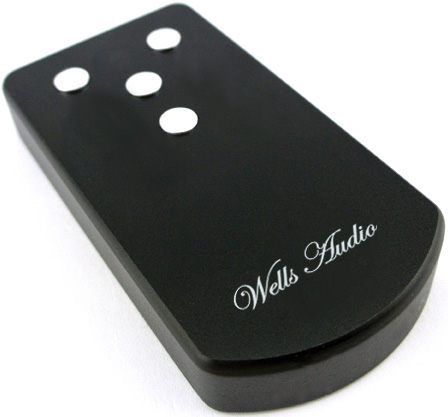Jeff Wells used to own a retail shop named Audible Arts in Campbell, CA, about fifty miles southeast of San Francisco. As brick-and-mortar audio stores withered in the onslaught of online commerce, Jeff capitalized on his retail experience and formed Wells Audio, a manufacturer of amplifiers. (See the 2015 Dagogo interview with Jeff.)
After developing the $7,000 Innamorata power amplifier six years ago, Jeff wanted to address the needs of younger, upcoming generations, and the $5,000 Akasha power amplifier (150 Wpc/8 ohms, 220 Wpc/4 ohms) was the result. Subsequently, a $15,000 flagship, the Innamorata Signature, was introduced for those customers who were demanding something better than the original Innamorata. Dagogo senior reviewer Doug Schroeder reviewed the Akasha amplifier in 2012 and the Innamorata in 2013, while Greg Petan reviewed the Innamorata Signature in 2015.
The $3,599 Majestic, the subject of this review, is the company’s first integrated amplifier and represents Jeff’s effort in further addressing the needs of the younger audiophile market. It brings Wells Audio amplification to an attractive, lower price point.
Whereas the Akasha and Innamorata upper models are both endowed with dual transformers and weigh in at 58 pounds, and the Innamorata Signature comes in at 60 pounds, the Majestic, with its one transformer only, is a comparatively light 35 pounds but still sports the same power output into 8 ohms as the Akasha and Innamorata amplifiers. The Akasha was a more modest form of the Innamorata and the Innamorata Signature employed the most superior parts of its siblings that required a magnitude of more time-consuming assemblage. For the Majestic, Jeff intended the integrated amplifier to provide a performance level close to his $5,000 Akasha for households of modest income and audio system.
The Majestic is a Class AB design that churns out Class A power up to 15 watts. On the left side of the back panel is one pair of balanced (XLR) and four pairs of single-ended (RCA) inputs, plus a fifth RCA pair with fixed output for subwoofer or headphone amplifier use. The IEC plug and the speaker five-way binding posts sit rather closely together on the right side of the back panel. The front panel of the amp is adorned with an Alps motorized Volume control on the left, a front-lit “Volumeter” at the center, which tracks the setting of the manual volume control, and an Input Selector knob on the right. The power switch is accessible under the front of the chassis. The Majestic includes a compact remote control.
Jeff told me all his power amplifiers share the same basic circuitry, with his upper–end models employing progressively higher-performance capacitors and other parts, including Bybee noise filtering technology. These products have a reputation for being among the quietest electronics in the high end. Even at the lower price points – Akasha, Majestic, Looking Glass and Milo – Jeff is proud of the quietness of the designs, which he attributes “in large part to simplicity of design and near flawless execution. Also central to my design philosophy is that every component that is used we sonically evaluate before it makes it into a product.”
The price difference of the Akasha and Majestic is not significant by high-end standards although the Majestic resides more in the white-hot zone of budget amplifiers than the Akasha. Many audiophiles are only comfortable in spending $2,000 or less in amplifiers and in this market segment the Majestic represents a significant investment. The Wells Audio Majestic is not an ultra-performing amplifier, although neither is it a product for the less initiated audiophiles in mind.
For the seasoned audiophile who continues to endure the upgrade bug of difficult purchasing and economizing decisions in his/her life, who has spent long nights comparing loaner equipment from audio stores before returning them the next day, and who is familiar with the anguish of buyer’s remorse from the realization that a better decision could’ve been made had he or she done the comparison before the purchase and not after, the Wells Audio Majestic is an easy choice. It is not adorned with complex convenience features but it adheres to one overriding priority: give the experienced listener sonic refinement when driving high-end speakers – at a comparatively modest cost.
A few “budget” amplifiers ranging from $1,500 to $2,500 passed through my system recently, but the Majestic was the only one able to drive the 86dB Quad ESL 2812 electrostatics with considerable composure. By virtue of the simple circuit design and pure tonality, the Majestic driving the Quads bore a pleasant resemblance to how the Quads sound driven by the $12,000 Pass Laboratories INT-250. Intimate jazz ensembles carried momentum with the often-illusive sense of energy attained by the INT-250. Complex orchestral passages were presented with separation and frequency extension beyond the crop of “budget” amplifiers I auditioned. Quite simply, the Wells Audio Majestic was one of the most refined and powerful class AB amplifiers I’ve heard at $3,500.
Though a budget design in the company’s offering, the Majestic possessed such competency nonetheless that it showcased the superiority of the $8,000 Bricasti M1 dual-mono DAC over the $3,100 Arche Audio Opus 5 DACT and Opus 501 Power Supply in increased three-dimensionality and spectral extension.
This is the kind of novel product I want to leisurely show our attendees at the 45-room California Audio Show (July 28-30).
Not long after, Jeff Wells brought over the Majestic Reference, a $12,000 version of the Majestic ordinaire. And that, as they say, is a whole ‘nother story.
Copy editor: Dan Rubin
- (Page 1 of 1)



